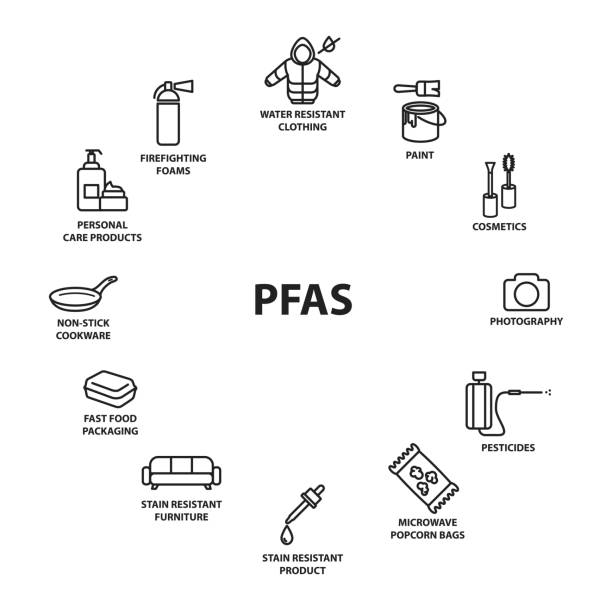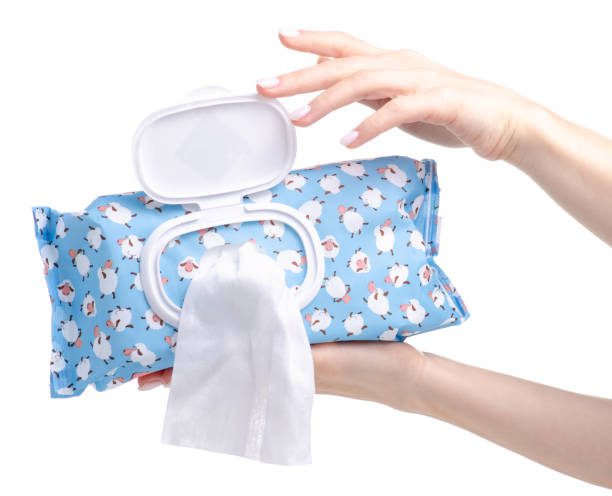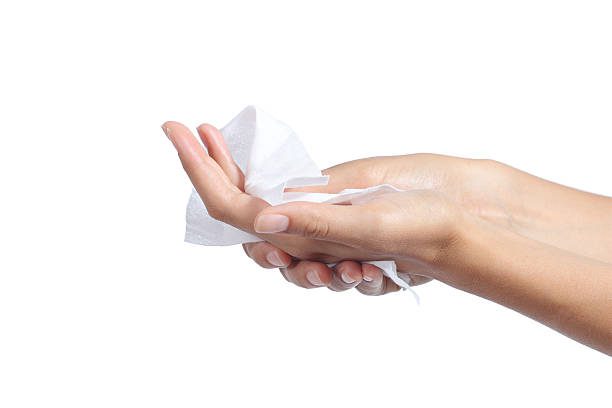Understanding PFAS in Baby Wipes
As parents, Our top priority is the health and safety of our children. We carefully select products like Baby Wipes to ensure they are gentle, safe, and free of harmful chemicals. However, suppose you’re using baby wipes for your child. In that case, you must listen to or read about PFAS (Per- and Poly-fluoroalkyl Substances) chemicals and have these questions in your mind. What is PFAS? Is this present in everyday products? Is this harmful to the baby’s health and safety? Should I use baby wipes, including PFAS? This article will explain what PFAS are, why they might be in baby wipes, and whether they harm your baby’s health. We’ll also explore how parents can avoid these chemicals and choose safer alternatives.

What are PFAS in Baby Wipes?
PFAS, or (per- or poly-fluoroalkyl substances). They have been around since the 1940s and can be found in various products such as non-stick cookware, water-resistant fabrics, food packaging, and, concerningly, some personal care items like baby wipes.
PFAS are often called forever chemicals because they break down very slowly in the environment and our bodies. Over time, PFAS can accumulate, leading to potential health risks.

Use OF PFAS in Baby Wipes?
You might wonder why a chemical like PFAS would be used in baby wipes. In some cases, PFAS may be added to improve the wipe’s durability or moisture resistance. These chemicals can make the wipes stronger, more absorbent, or more resistant to breaking down when used. However, not all baby wipes contain PFAS.
PFAS are only intentionally listed on some baby wipe labels, making it difficult for parents to know which products are safe. Often, they are used as part of the manufacturing process and not disclosed as an ingredient.
Health Risk of PFAS Exposure For Babies
PFAS are a cause for concern because of their potential health effects, particularly in babies and young children who are more vulnerable to harmful substances. Here are some of the critical health risks associated with PFAS exposure:
1. Hormonal Disruption: Studies suggest that PFAS can interfere with the body’s endocrine system, which regulates hormones. This disorder can lead to developmental problems, especially in growing infants.
2. Weak Immune System: Studies suggest that exposure to PFAS can reduce the effectiveness of vaccines and weaken the immune system.
3. Developmental Delays: Studies suggest that PFAS may impact growth and cognitive development in children.
4. Increased Risk of Certain Cancers: Studies suggest that PFAS has been linked to certain cancers, including kidney and liver, in fewer cases.
Babies have sensitive skin and developing bodies, which makes minimizing exposure to harmful chemicals like PFAS even more critical.
How To Find PFAS Free Baby Wipes
To protect your baby from potential PFAS exposure, it’s important to choose baby wipes that are free from PFAS chemicals. Here are some suggestions on how to find PFAS Free Baby Wipes:
1. Check Labels: While PFAS might not be directly listed, look for certifications like “PFAS-free,” “organic,“ or “free from harmful chemicals.“ Brands that prioritize transparency will often highlight their commitment to safety.
2. Avoid “Water-Resistant“ or “Durable“ Claims: Wipes promoting extra durability or water resistance may be more likely to contain PFAS. Opt for more straightforward, natural ingredients.
3. Research Trusted Brands: Look for brands known for producing natural or eco-friendly baby products. Reading articles and researching trusted parenting websites can also help guide your decision.
4. Consider Cloth Wipes: Try to avoid disposable wipes. Instead, use cloth wipes with water or a natural solution. This can be a safer and more sustainable option for your baby’s sensitive skin.
A Guidelines For New Parents
In many countries, PFAS are not strictly regulated in personal care products such as baby wipes. However, PFAS can be present in food packaging, drinking water, and household dust, so consumer products have less oversight, especially those not ingested. This lack of regulation means parents must be extra vigilant about the products they buy.
Some manufacturers voluntarily exclude PFAS from their products. Still, it can be challenging for customers to identify safe brands. There are some certifications, like the PFAS free label, that can help parents make informed choices. Look for certified organic wipes that are marked as free from harmful chemicals.
What Are Experts Saying?
Health and environmental experts are increasingly raising their voices about PFAS in everyday products, especially those used by children, which is not acceptable. Many experts recommend limiting your child’s exposure to PFAS as much as possible, mainly because of the potential for long-term health effects.
Recent Studies on PFAS in Baby Wipes
Recently, the presence of PFAS in baby wipes has attracted attention from health authorities and environmental groups. In some cases, baby wipes have been recalled due to concerns about chemical contamination, further highlighting the need for stricter regulation and consumer awareness.

Public concern about PFAS has also been growing. Parents are now demanding safer products for their children, which has forced the company to create PFAS-free baby wipes.
Conclusion
PFAS in baby wipes is a genuine concern for parents, but by staying informed, you can take steps to protect your baby’s health. Understanding what PFAS are, their risks, and how to avoid them can help you make safer choices when selecting baby products. Always look for brands prioritising transparency and safety, and consider alternative options like organic wipes or reusable cloths.
As awareness of PFAS grows, we can expect stricter regulations and safer products. For now, being a cautious and informed consumer is the best way to ensure your baby’s well-being.

